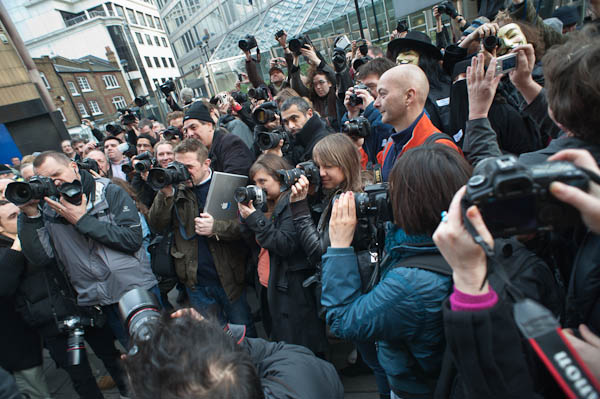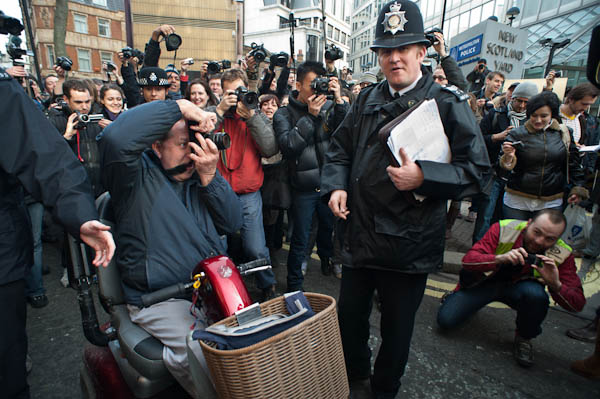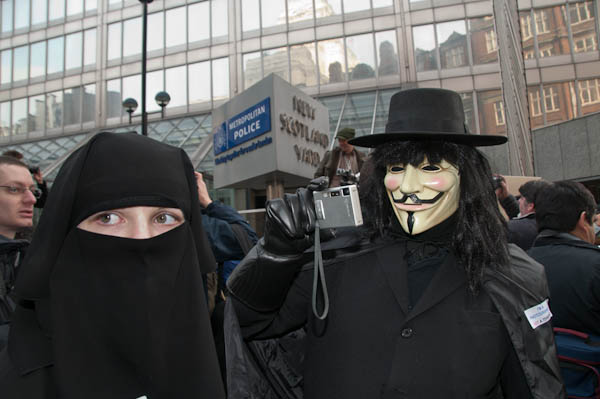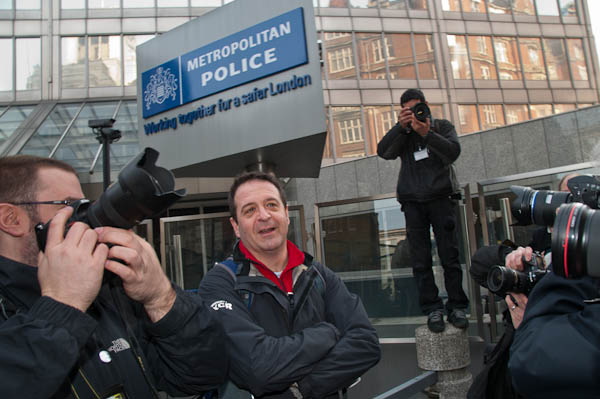Photographers increasingly feel threatened when they take pictures on the public street. Sometimes they are actually threatened, both by vigilantes and by the police – and like most others who work on the streets, its happened to me. The police have even run a poster campaign against photographers – and in March last year NUJ General Secretary Jeremy Dear staged a one-man protest at New Scotland Yard to defend press freedom and the rights of photographers. Previously the NUJ and other journalistic bodies had agreed guidelines with the police about how police and press should work together, but these seldom seem to respected by the police. You can read more about the issues and the event in the >Re:PHOTO blog post ‘Photographers by the Yard.
Previously much of the legal friction between police and photographers had been over the wide-ranging powers of police under Section 44 of the Terrorism Act of 2000, which allows them to stop and search anyone within a designated area. The whole of London is one such area, and the powers, intended to be in force for a maximum of 28 days, are renewed indefinitely.

Monday’s demonstration – or rather ‘media event’, since it took place in the SOCPA designated area – was a rather larger event, with an estimated 400 professional and amateur photographers, and was organised by a small group of photographers to mark the introduction that day of Section 76 of the Counter-Terrorism Act 2008. It is now an offence to photograph any policeman, serviceman or intelligence agent in a way that is “likely to be useful to a person committing or preparing an act of terrorism,” or to publish such a picture – for example on a web site such as this.

You don’t have to be a terrorist or to make use of your picture for any terrorist purpose. If a court can be persuaded your picture might be of use to a terrorist, you can get 10 years in jail. It is the kind of law that a few years ago we would have shrunk with horror at as clear evidence of a police state.

At the moment although we are lurching dramatically in that direction, our courts do usually provide some protection, and the law does give them some power in it’s statement: “It is a defence for a person charged with an offence under this section to prove that they had a reasonable excuse for their action.” It is perhaps hard to imagine – at the moment – a court convicting a journalist covering a demonstration for photographing the police. But rather easier to imagine it being used – as with Section 44 – by police to harass photographers and prevent them from getting on with their job. Being held and searched for 40 minutes while on the way to cover an event can be a pretty clear interference with the freedom of the press to report.

Mark Thomas speaking at the event
More about the event and more pictures on My London Diary.